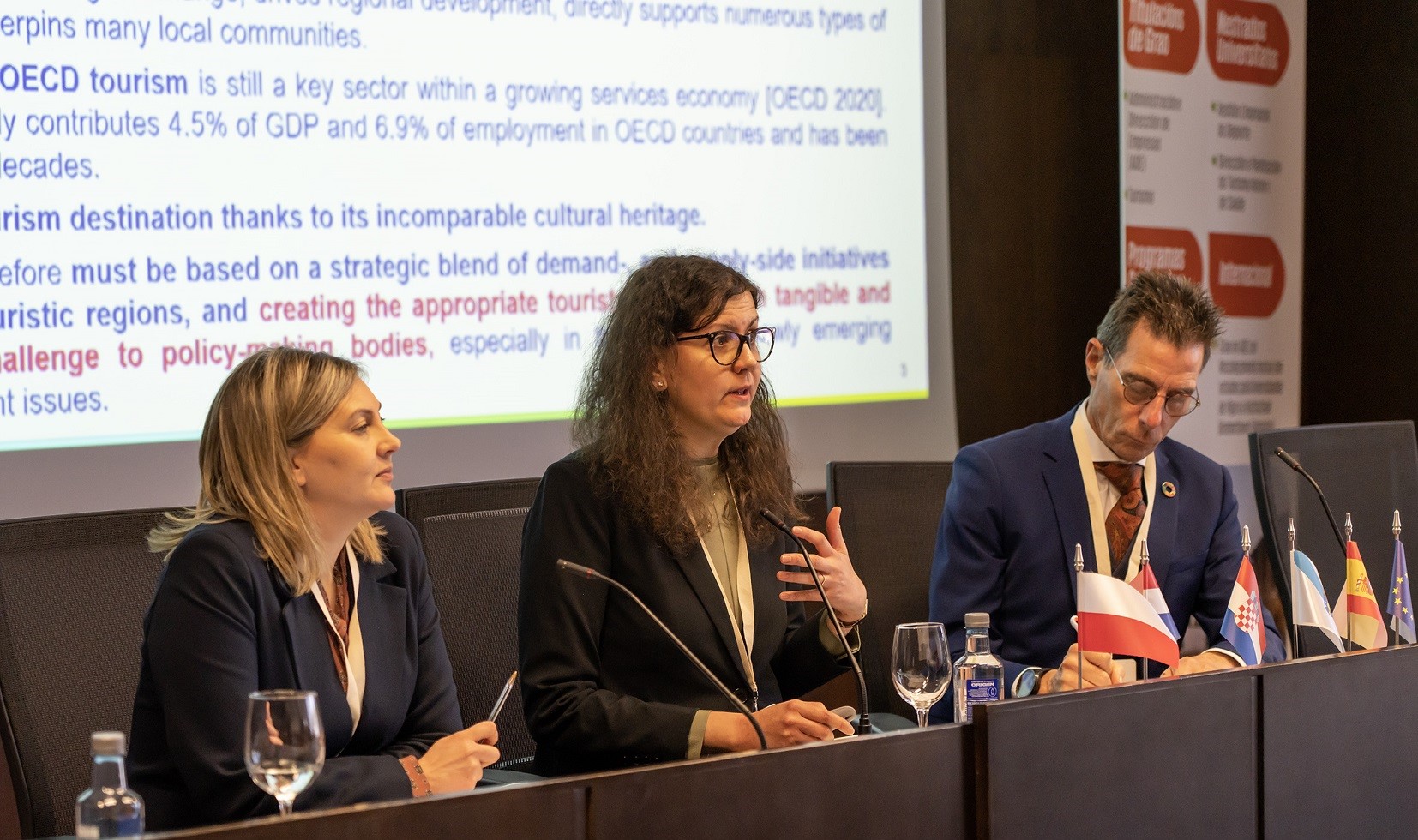
Presentation at the Keep On project's final event
Dr. Mariann Szabó, thematic leader gave a presentation in Ourense at the final dissemination event of the Interreg Europe project "Keep On"
Major tourism attractions are emerging as internationally acclaimed hubs of visits and services, leading to oversight of other cultural sites and to non-sustainability of most-visited destinations. At the same time tourists are upgrading authentic cultural heritage, offering specific experience rooted in local history and the preserved cultural legacy of communities, adding unique flavors and excitement to their adventure.
Small and medium sized towns with rich but undervalued cultural heritage possess the potential to offer new, unique and authentic experiences, but suffer from either the dominance of major attractions in their vicinity, or from their relatively remote locations. Positioning them as authentic destinations can simultaneously sustain local cultural heritage and create better prospects for locals. The attraction of tourists to less recognized places can create a more even distribution of tourism and more cohesive regional economies.
Local Cultural Flavors’ objective is to improve policies supporting places unable to fully exploit their cultural legacies due to less-advantaged locations. The project will help partners to meet the challenge of identifying the most effective ways to support unique local sites with an innovative analysis toolkit, extensive knowledge sharing and with assisted interaction with local public and private stakeholders. This way the specific local and regional potentials and bottlenecks can be properly explored and used to elaborate the right policy frameworks elevating and positioning new authentic destinations.
As a result of the cooperation of the international partnership, 8 Action Plans will be produced as main outcomes, targeting various policy instruments (ERDF Operational Programmes, development and marketing strategies) supporting the addressed locations in their pursuit to become more integrated and integral players in regional tourism, based on their recognized and properly used authentic cultural assets.
€1,777,873.00
Environment and resource efficiency
The KRAFT Programme is one of 3 pilot regional development policies of the HU government, and aims the sustainable development of small and medium sized border towns. In contrast to conventional regional and city development practices (Green Cities Index, Sustainable Cities Index, Creative Cities Index, etc.), the approach of the KRAFT Programme integrates so-called “soft” factors (culture, identity, heritage) and their efficient management with “hard Factors” such as infrastructure, energy, communication networks and economic sustainability. Another novelty of KRAFT is to identify and utilize synergies of interdependencies among rural and city development factors), thus properly revealing the full range of conditions required for the implementation of new, complex regional development strategies of cities and their rural environment.
iASK is identified by the government as responsible for the preparation of the KRAFT Programme and its adaptation to other border regions in HU. In the course of LCF, iASK aims to improve the KRAFT Programme to specifically build on cultural heritage based urban development, often the most promising development asset of small/medium cities, and an intervention area providing economic, job creation, business/tourism attractiveness, workforce/inhabitant retention benefits all at the same time.
Regional Operative Programme 2014-2020 of Romania aims to ensure the continuation of strategic regional development. It promotes smart sustainable and inclusive growth in all RO regions, making them more attractive places to live and to work in. The programme addresses the major development challenges for RO: regional competitiveness, sustainable urban development, low-carbon economy, and economic and social infrastructure at regional and local level.
The programme focuses on 8 Priority Axes, out of which LCF targets PA 5: “Improving the urban environment and conservation, protection and sustainable use of cultural heritage”.
By focusing regional level thematic calls, and modifying the selection process, the targeted PI can be better positioned to tackle the following challenges of Harghita County:
- Boosting sustainability through sharper focus on the exploitation of local resource based authentic tourism potential in Harghita and the introduction of modernized operational and sales schemes.
- More balanced regional tourism cooperation disseminating tourism loads of major hubs and empowering smaller cultural cities.
The targeted PI evaluates the rich cultural heritage of the city, the compact, easily accessible historic center, abundant in arts and gastronomy, and high standards in hospitality, and aims to combine it with the vibrant, modern and innovative social and economic environment of s’Hertogenbosch. It is approved by the city council and concentrates on the following objectives:
- O1 Increase attractiveness for residents by strengthening uniqueness and generating proudness and affiliation
- O2 Combine efforts of all departments and actors to increase visitor economy (including no. of tourists, visits, spending and length of stay)
- O3 Attract private investment and companies to settle in MHB and improve the business network in RIS3 sectors (agrifood, construction, logistics and data science/ICT); provide an attractive living environment for educated (international) employees
- O4 Connect students and young professions to the city, and build on their creativity, knowledge and entrepreneurship
Cultural heritage is considered a key strength, requiring an integrated approach of currently separated policies of heritage and tourism/citymarketing. MHB wishes to improve Objective 2, by developing a workplan to improve the existing structure of actors in citymarketing and cultural heritage, initiate new innovative market and product development (adding authentic, intangible elements to the visitor experience), and establishing effective destination management.
Waterford belongs to Ireland’s ‘Ancient East’ historic region with a unique attraction base, predestining it to become one of Ireland’s leading tourism destinations outside Dublin, but currently less competitive as compared to the Dublin-Cork-Galway triangle. Tourism Statement of Strategy 2017–2022 aims to:
- Enhance reputation and profile
- Achieve maximum potential as a primary destination in the Ancient East, with united and cohesive tourism sector
- Increase number of visits, duration and spending
- Reduce seasonality
- Maintain, conserve and restore heritage to promote authentic tourism
- Active fund raising and support
Visitors choose to holiday in Waterford because of the quality and accessibility of cultural heritage and natural environment. Apart from lush countryside and a stunning coastline, the historic story of Waterford includes a UNESCO designated Geopark; the Garden Trail of great houses, landscape demesnes and gardens; and a wonderful collection of historic towns and villages that are a testament to historic legacy for visitors and communities alike.
The success of the policy depends on the selection and implementation of projects properly positioned to most effectively address the aims, and building on the inherent and authentic heritage portfolio of the region. WCCC wants to improve its project assessment, selection and initiation capabilities and its access to funding, in order to foster development of its small historic cities trough authentic tourism.
The targeted PI has five priority axes and 13 specific objectives. As this is FI's sole Structural Funds programme for the current programming period, no funding is provided for activities outside these priorities.
LCF addresses 2 PAs dealing with various sectoral aspects of the transversal topic of tourism (not addressed directly by objectives):
- PA1 Improving SME competitiveness: to diversify business structures and increase the number of growing, innovative and internationally expanding companies, start-ups and new operations. PA1 is relevant for LCF as it could potentially improve the funding position of authentic tourism products and services, enabling more effective preservation and promotion of the cultural heritage of the region.
- PA2 Producing and using latest information and knowledge: to strengthen selected smart specialization fields of companies, and application of research & Innovation results in commercial products. LCF could focus the intervention on digitalization and VR applications strengthening the authentic tourism service chain.
FI signed the EC Treaty on EU cultural routes in 2018, and is planning to boost the tourism sector with new cultural heritage products. As South Savo is the heart of the FI lake district, rich in natural and cultural heritage, the envisaged cultural heritage related improvements are in line with the interests of the South Savo Regional Council, the managing authority of the targeted PI.
Tourism, the main driver of cultural heritage preservation and promotion, is a transversal topic in Veneto Region, shared between 3 sources (ERDF, ESF, FEASR), but does not appear in itself as an area of funding. Axis 3 of the OP is focusing on enhanced productivity of various economic sectors, including the action specifically targeting the competitiveness of companies servicing tourism destinations. This is the main regional level funding scheme for tourism service providers, offering crucial support for these organizations to develop and improve products/services and to engage into local and regional networks (e.g. Product Clubs).
The targeted PI is best positioned to strengthen the coordination and cooperation between public & private sectors in promoting a city as an authentic tourism destination. Municipalities like MVV potentially become facilitators of the process, empowering SMEs and creating synergies with public needs at the same time.
In order to put a more specific emphasis on the support of historic locations currently underdeveloped or underexploited, and also to favor authentic forms of tourism sustaining and promoting cultural heritage, the PI should be improved in terms of launching specifically targeted calls, and the inclusion of selection criteria favoring these initiatives and cases. As a result, coordinated and effective thematic attractions will be developed, the quality of services will be improved and synergies will be reached on a regional level.
The spatial development policy framework of LV regions consists of sustainable development strategies and development programs, with additional thematic plans as applicable. The RPR Development Program (as its targeted PI) is a 7 years planning document and is formulated in accordance with the National Development Plan. RPR’s long term vision (“Quality in all spheres of life - becoming humanly attractive, effective, open-minded and tolerant region - competitive in the global arena”) is served by 8 priorities. Out of these “Globally competitive industries” is most relevant for LCF: it sets four focus areas where RPR’s inherent strengths can be turned into advantages, including (3) cultural and creative industries, and (4) tourism.
The successful incorporation of LCF themes into the targeted PI is crucial for RPR, as its smaller settlements - with rich cultural heritage but not presenting proper urban leverage to compete against neighboring Riga - are slowly but constantly declining in economic and demographic terms, leading to disproportionate regional development and unexploited potentials. By empowering these locations overshadowed by Riga, their visitor economy could be boosted, triggering further economic growth and urban attractiveness. RPR plans to introduce specific focus on the support of authentic tourism and its framework conditions, exploiting the existing but untapped potentials, and at the same time generating sources for long term sustaining and preservation.
The aim of the PI is to contribute to the EU objective of investment in growth and employment in CR, through development of infrastructure (traffic, energy, environmental protection, ICT) and by supporting entrepreneurship and research. Within LCF IFT will address SO6c1, aiming to increase employment and tourist expenditure through enhancing cultural heritage (under TO6: “Preserving and protecting the environment and promoting resource efficiency”, TO budget: EUR 1,99 billion).
By promoting sustainable and more efficient use of resources, the PI addresses a clear EU priority. The EC Position Paper highlights the need for enhanced protection, valorization and management of natural/cultural heritage while considering its touristic/business potential. The PI is also aligned with CR Economic Programme, prioritizing cultural heritage investments with respect to its significant potential in the development of tourism (a labor intensive sector), strengthening entrepreneurship in general, and job creation in particular.
To better address the strategic objectives of the PI, and also to achieve more effective expenditures and more synergic regional cooperation between attractions, IFT wishes to incorporate changes in the management and selection processes in order to turn more attention to authentic, local resource driven tourism offered by secondary tourism locations, especially in North-Eastern CR (Varaždin, Čakovec, Osijek, Ilok, Vukovar, Slavonski Brod, Đakovo and Lipik-Pakrac).

Dr. Mariann Szabó, thematic leader gave a presentation in Ourense at the final dissemination event of the Interreg Europe project "Keep On"
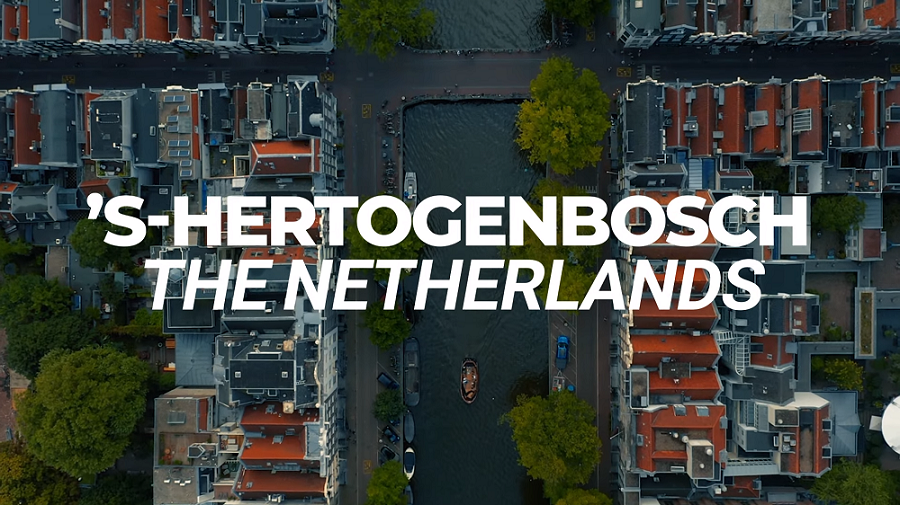
“Skills at the heart of Europe's future” a Regions & Cities story
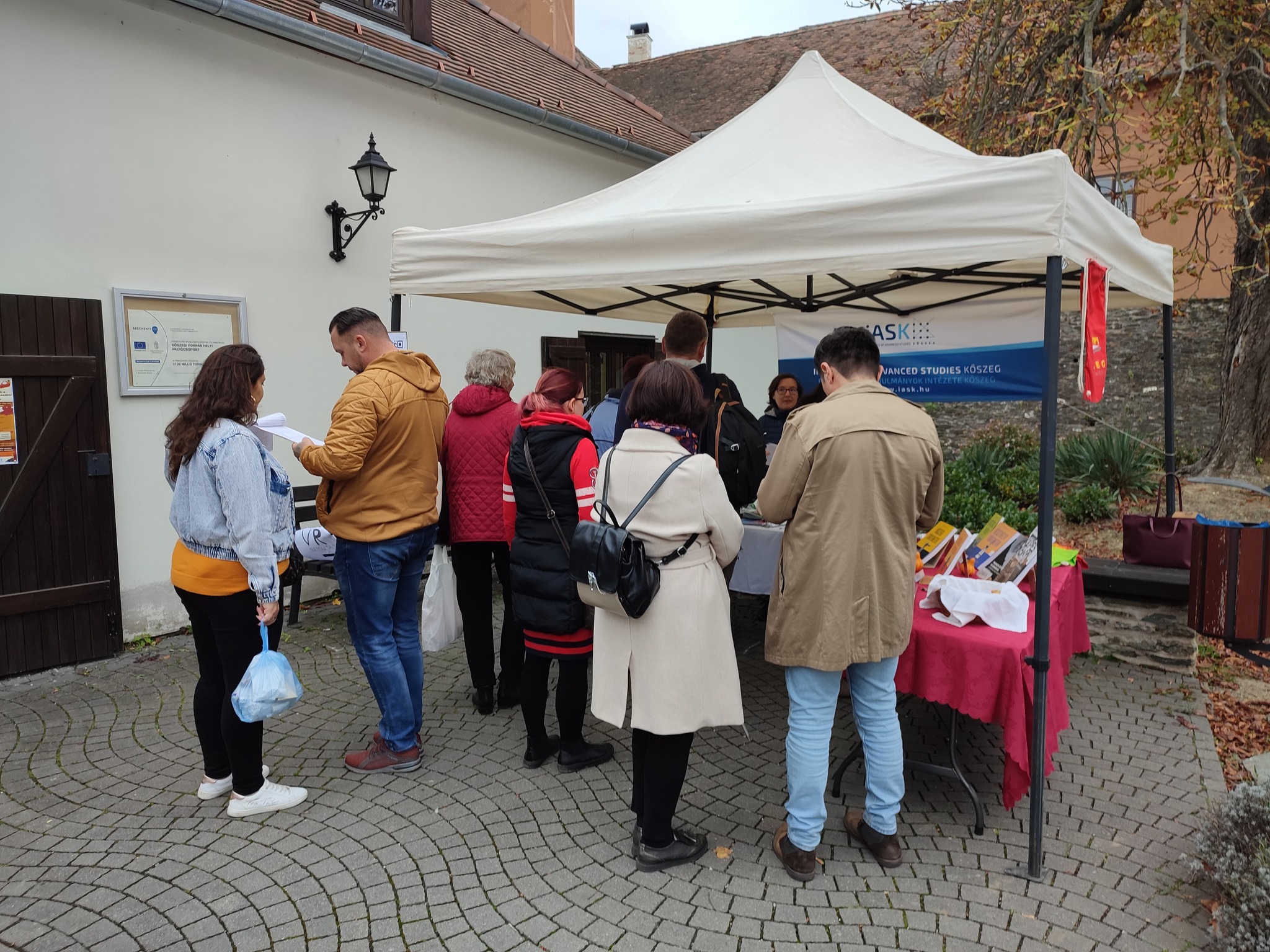
Successful implementation of the action for the assessment of Shared Sense of Identity in Kőszeg and in its surroundings in the framework of the Kraft Programme
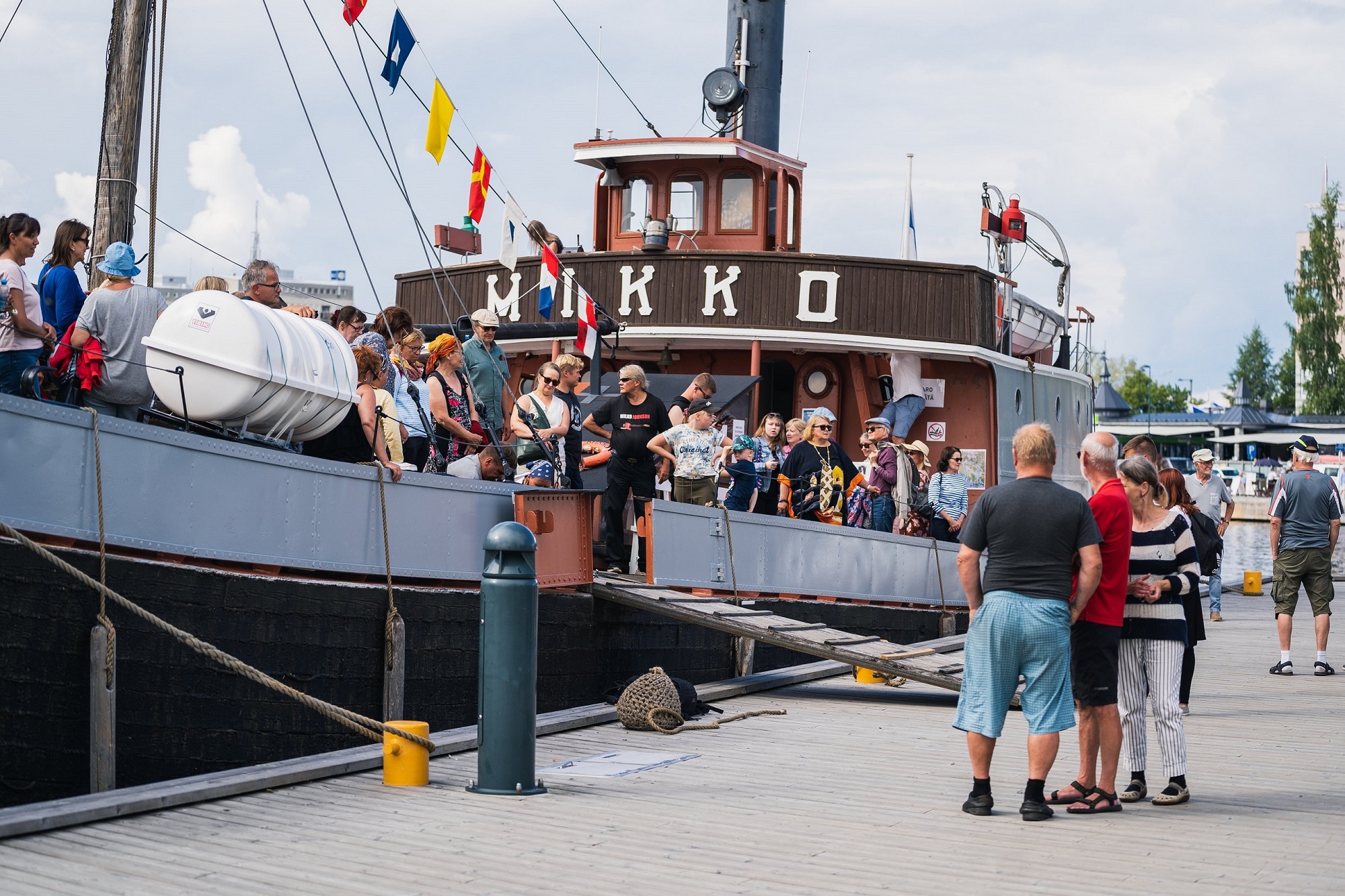
Events and meetings can help reduce seasonality in the hospitality sector. Meetings and events industry was promoted in Savonlinna through a dedicated project.
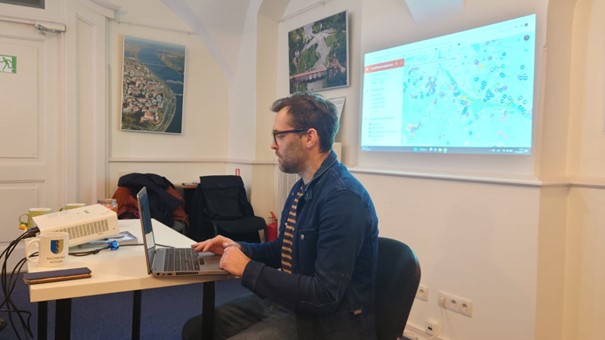
On December 13, 2022, the Riga Planning Region, in cooperation with the Latvian Rural Forum, organized a meeting with local action groups of the region.
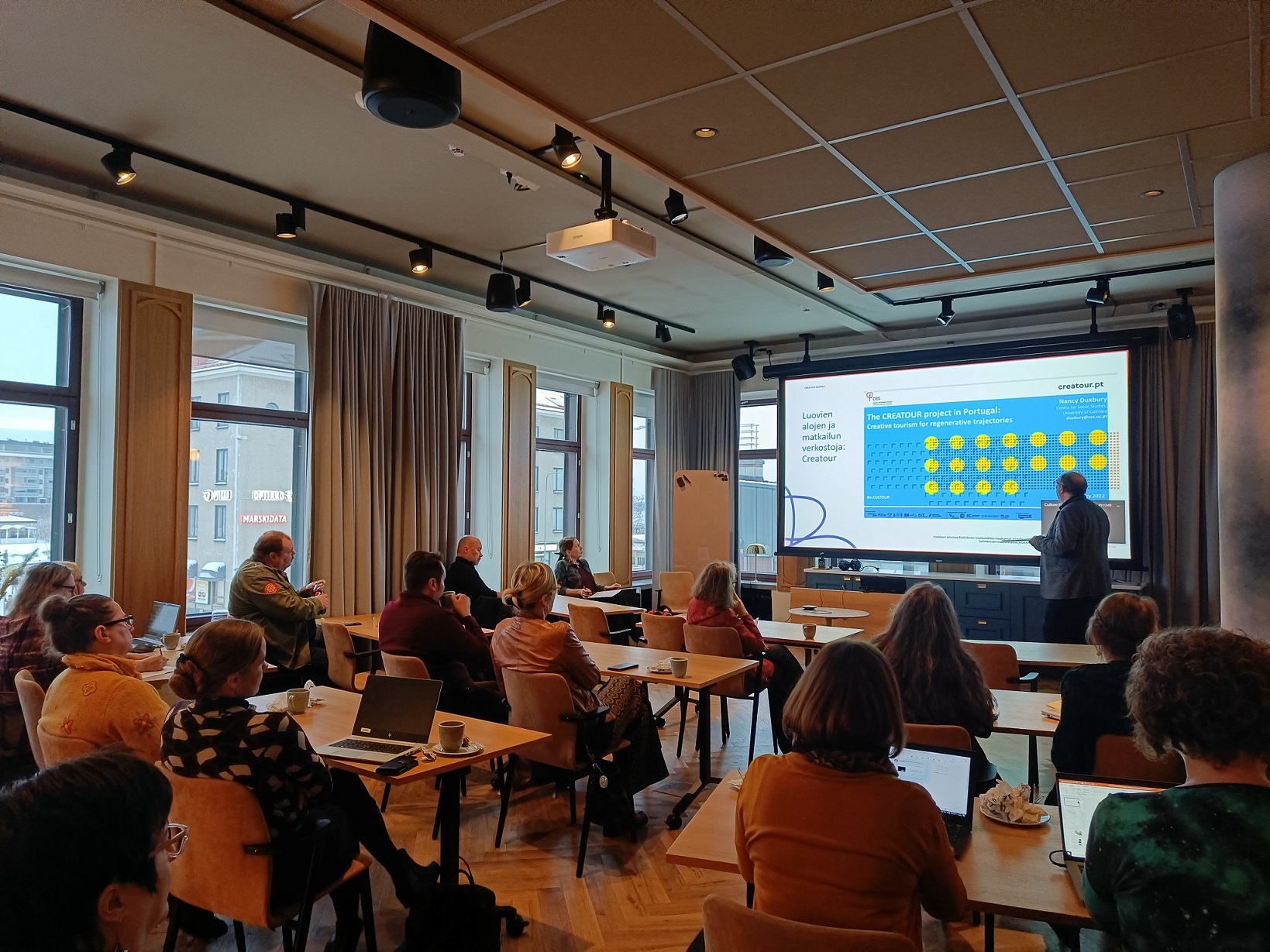
In December 2022 ca. 30 participants from cultural and tourism sectors met to talk about the potential of cultural tourism in Savonlinna and Lake Saimaa area.
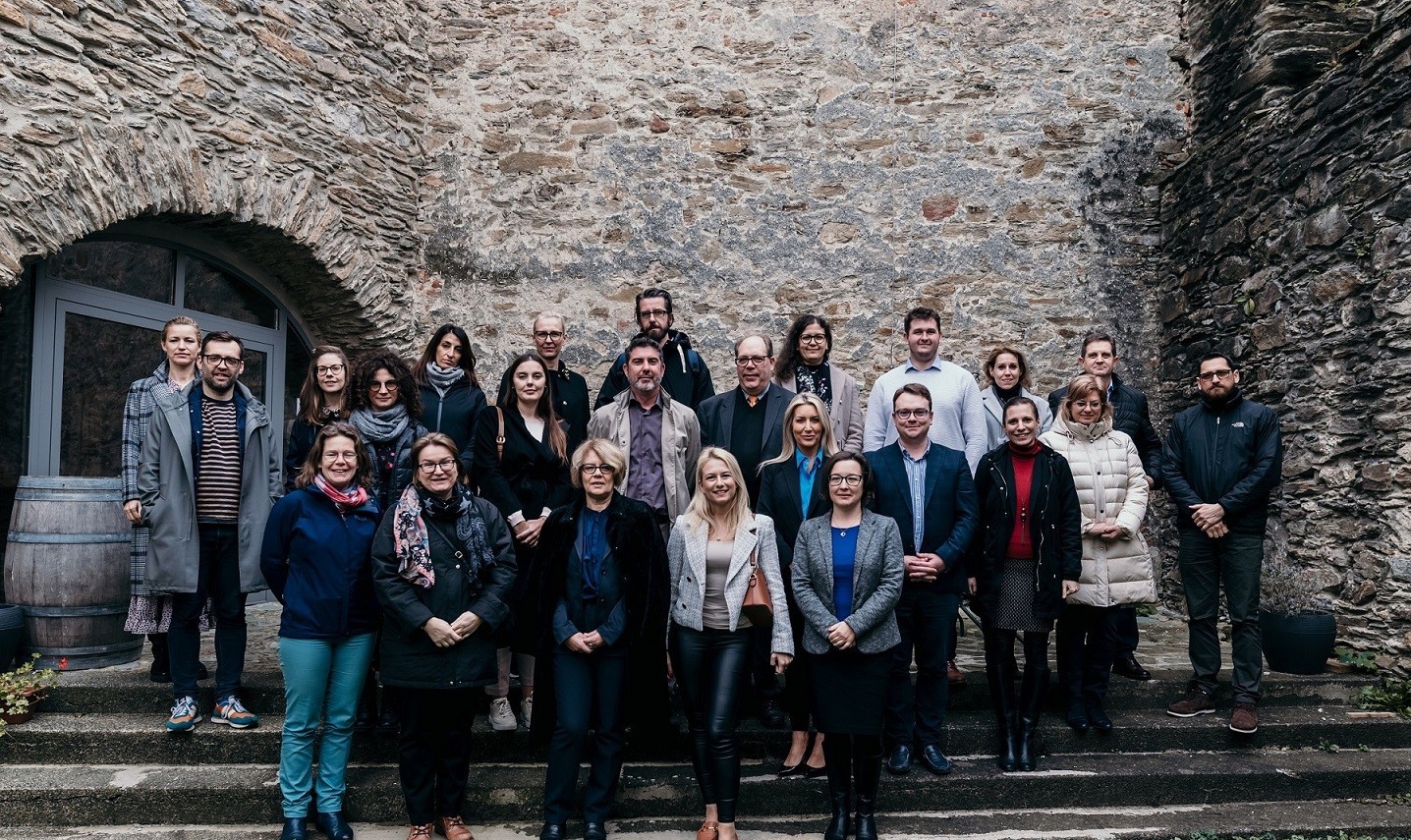
Successful project closure
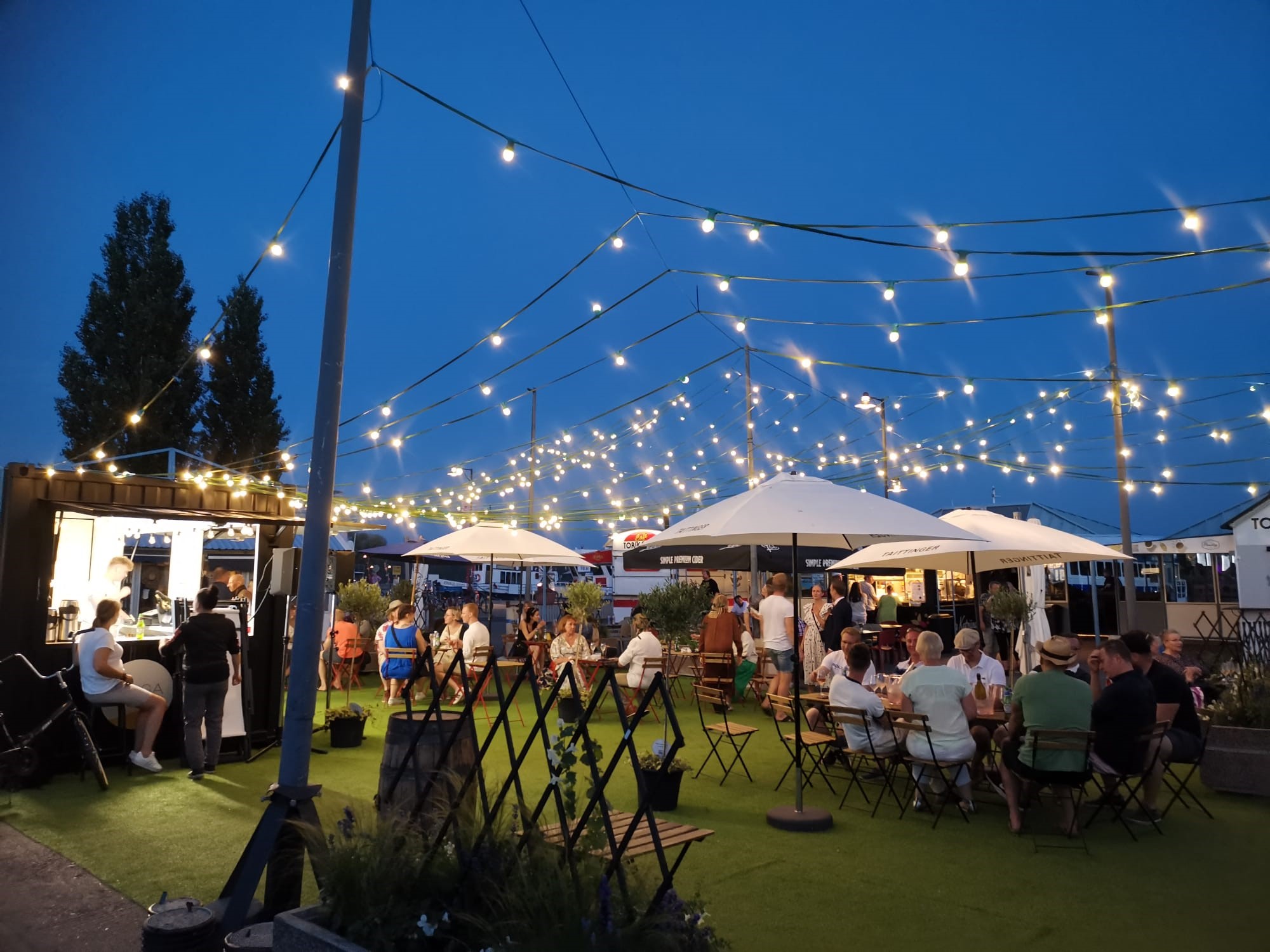
Market place revitalization in Savonlinna
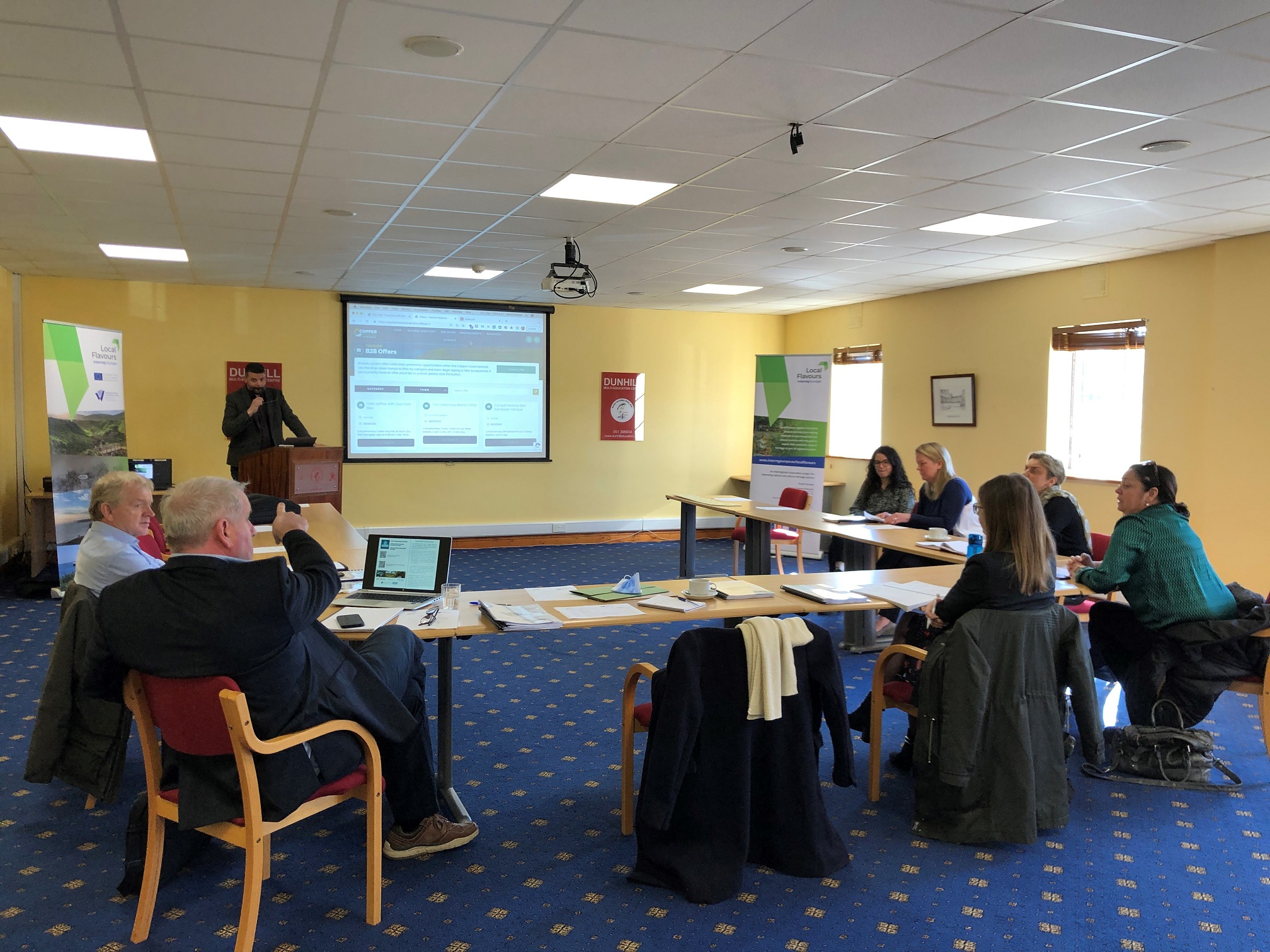
Local Flavours LSG Meeting Waterford
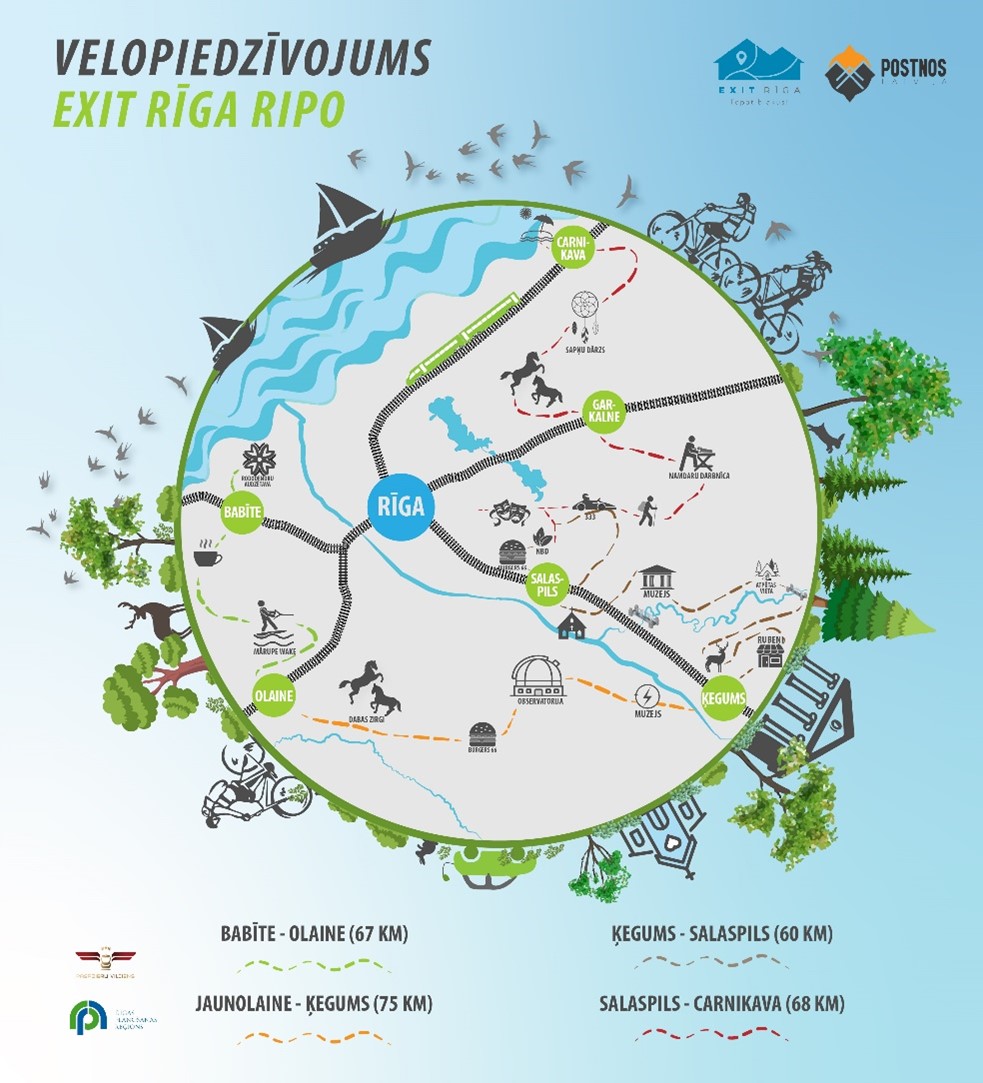
Pierīga (around Riga) Tourism Association in cooperation with Pierīga municipalities in the Riga planning region and PostNos have planned four cycle routes.